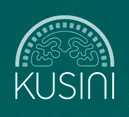Sept 2010, Zimbabwe.
By New Frontiers Tours
By New Frontiers Tours
2000 kms by road, 6 charter hops and 4 boat crossings later, we have returned from Zimbabwe with a comprehensive understanding of the situation on the ground there – politically, economically, and most importantly, from a tourism perspective. It has been an enlightening experience and a very positive one – so much so that we are progressing with plans for our own New Frontiers office to open early 2011 in Zimbabwe, and already have a dedicated Zimbabwe team in our office. We are delighted to share our thoughts with you as you track our route through the country…
Harare
On the one hand, Harare is shabbier than it was. Ten years of infrastructural decline does show: superficially the verges are unkempt, refuse collection is sporadic, roads and traffic lights have deteriorated. Deeper issues include occasional lack of water and more frequently, electricity blackouts, although generators are commonplace. On the other hand, it is busier, more vibrant and still more sophisticated than one would expect after a decade of economic meltdown. There is a sense of optimism and there are improvements taking place: almost all hotels are refurbishing or expanding and the stores once again have goods to sell. The airport is modern and easily navigated and the transfer to town is an easy 15-20 minutes. Most of the hotels are concentrated in the CBD (downtown), which is very walkable and safe and offers some good examples of colonial architecture, including the High Court and Parliament, while Unity Square is the focus of the city centre and home to the flower sellers. Further outside of the city centre is a magnificent soapstone sculpture market (for which Zimbabweans are famous), the huge tobacco auction floors and the upmarket suburbs of Borrowdale and Chisapeate.
Hotels in the city are of a good quality. The Holiday Inn Harare and the Crowne Plaza Monomotopa are as
chain hotels are, and are large and impersonal, but both have undergone extensive refurbishment and rooms are well priced and tasteful. Both have swimming pools, and the Crowne Plaza has great views over the Harare Gardens, with a slight edge in terms of location. The suite in the Crown Plaza is expansive and both modern and artistic and well priced.
The Bronte Hotel is privately owned, and while the immediate neighbourhood is shabby, the hotel itself has
a beautiful garden environment, centred around the (two) pools, and a sense of history and establishment.
Rooms are relatively basic although spotlessly clean and there is a sense of old school discipline in the service and dining room. The Meikles Hotel, a sister hotel to the Cape Grace and Victoria Falls Hotel, is an icon in the city and dates back over 100 years, although little remains of the original hotel except the name, and it now consists of two high rise towers, the North and South Wings.
Both overlook Unity Square. The South Wing is older and retains a more classic feel, not unlike the Cape Grace, with photos of old Harare and the hotel, although the rooms in both wings don’t match the expectations set by the impressive public areas. The South Wing is more tasteful, with creams and dark classical furniture and relatively small bathrooms. The – ironically newer – North wing, looks more dated with florals and pressed wood. However, service is impeccable, and the restaurant and bar bring a sense of refinement in keeping with the legendary status of the hotel. There is a rooftop pool, small gym and sauna facilities.

We head east out of the city, on the main road towards Mutare, and passing the Cresta Harare, a well priced hotel better suited to groups, with generous pool and gardens. The road, which continues for 300kms to Mutare, is also the route towards the Eastern Highlands, and passes the orderly farming town of Marondera (the Spar here is neat and well stocked) and Halfway House, a Cape Dutch style stopover point 131kms from Harare that dates back to 1891. Well worth a stop, it has a garden restaurant, antique shop, curio shop and farm produce. It is popular with locals and has an authentic Zimbabwean feel. The scenery becomes increasingly mountainous as you leave the main road for the drive to Nyanga, deep in the Eastern Highlands. Huge rocky outcrops and looming peaks dominate the landscape, which alternates between flat plains and bouldered peaks. It is unmistakably African – and Zimbabwean.
Read our complete trip report including Hwange, SingitaPamushana, the Great Zimbabwean Ruins, Bulawayo, Mana Pools and more.



Leave A Comment
You must be logged in to post a comment.